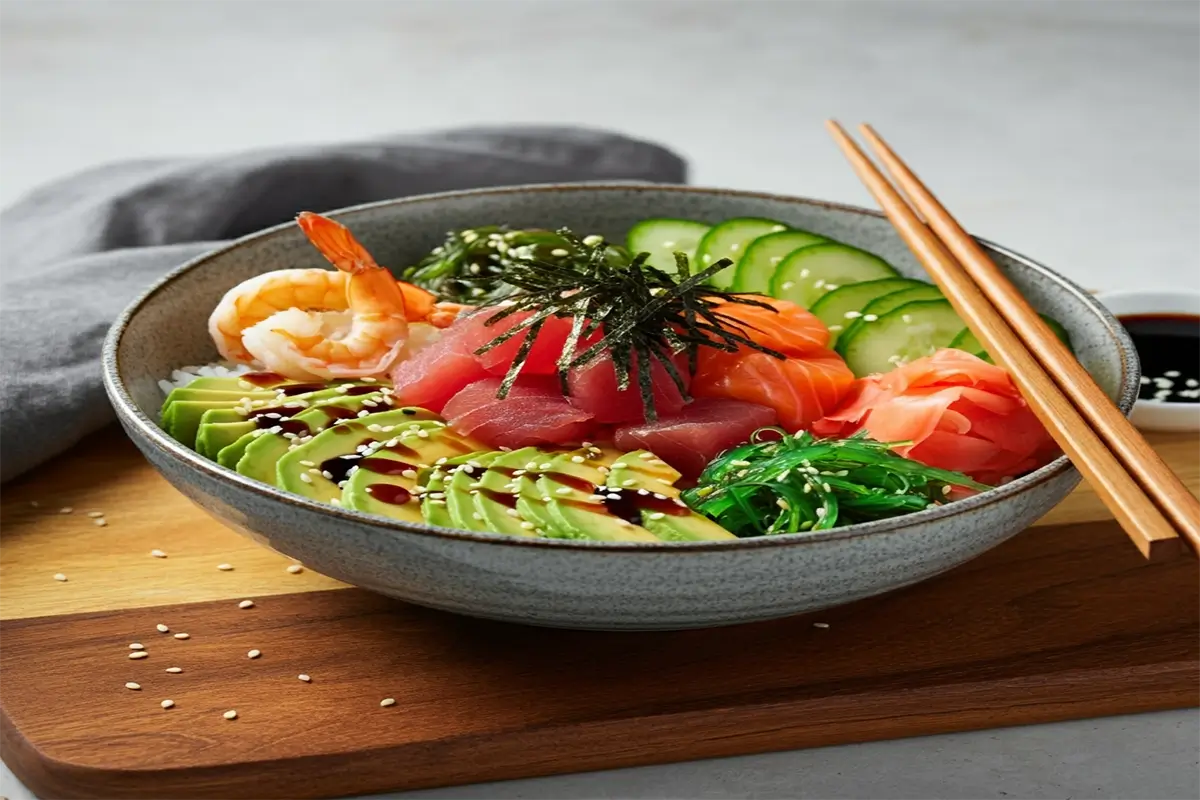Have you ever had a dish that’s not just food but an experience? Chirashi, also known as a “scattered sushi bowl,” is one of those meals that brings together flavor, texture, and visual appeal in perfect harmony. Whether you’ve enjoyed it at a sushi bar or are about to make it for the first time, chirashi is a Japanese dish that can easily steal your heart and satisfy your taste buds. In this article, we’ll explore everything you need to know about chirashi—its origins, key ingredients, health benefits, and how to make it at home.
Table of Contents
What is Chirashi? A Brief Introduction to the Japanese Rice Bowl
At its core, chirashi is a bowl of seasoned sushi rice topped with various ingredients like raw fish, vegetables, and sometimes pickled garnishes. The word “chirashi” literally means “scattered” in Japanese, referring to the way the ingredients are scattered over the rice. It’s often referred to as a “deconstructed sushi bowl,” offering a casual, yet flavorful alternative to traditional sushi rolls.
This dish is loved not only for its delightful taste but also for its versatility. Whether you prefer a minimalist approach with just a few ingredients or enjoy piling on a variety of toppings, chirashi can be tailored to your personal preferences.
Chirashi vs. Sushi: What’s the Difference?
While both chirashi and sushi involve raw fish and seasoned rice, there are key differences. Sushi typically consists of vinegared rice topped with a small portion of fish, while chirashi is a more generous serving of rice with a variety of toppings scattered across the surface. The rice in chirashi is often seasoned with vinegar, sugar, and salt, creating a flavor base that complements the toppings.
In essence, chirashi gives you more freedom to customize the dish with your favorite ingredients, unlike sushi rolls, which tend to be more structured.
Cultural Significance of Chirashi
Chirashi has deep roots in Japanese culture. It’s commonly served during special occasions like New Year’s celebrations and birthdays, as well as for casual meals. Chirashi bowls are seen as a festive dish, with vibrant colors representing the prosperity and beauty of life. Today, chirashi has become increasingly popular outside Japan, with sushi restaurants around the world offering their unique takes on the dish.
Ingredients You Need for a Perfect Chirashi
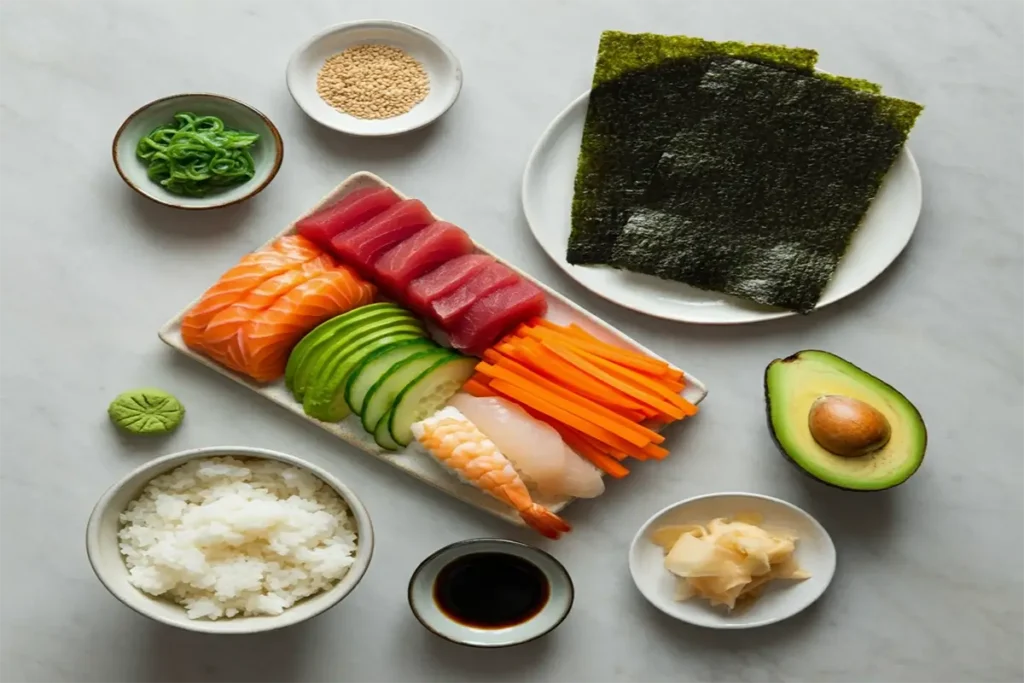
To make chirashi, there are some key ingredients you can’t overlook. These components come together to create the ultimate sushi rice bowl, combining freshness, texture, and flavors in a way that’s truly satisfying.
Sushi Rice: The Foundation of Chirashi
Sushi rice is the cornerstone of any chirashi bowl. What makes sushi rice special is its sticky texture, which allows it to hold together and blend perfectly with the toppings. To prepare sushi rice, you’ll need to rinse it thoroughly to remove excess starch, then cook it and season it with a mixture of rice vinegar, sugar, and salt. This seasoning gives the rice a delicate balance of sweet and tangy flavors.
Fresh Fish and Seafood: A Chirashi Essential
The key to a great chirashi lies in the quality of the fish. Traditional chirashi often includes slices of raw fish like tuna, salmon, and yellowtail. When choosing fish for your chirashi, always opt for sashimi-grade fish to ensure it’s safe to eat raw.
Other seafood options, such as shrimp or octopus, are also common additions. If you’re not a fan of raw fish, feel free to use cooked alternatives like grilled eel or crab meat.
Toppings and Garnishes: For Extra Flavor and Texture
The toppings on chirashi are where you can get creative. Popular garnishes include:
- Avocado: Adds creaminess and balances the richness of the fish.
- Cucumber: Provides crunch and freshness.
- Pickled Vegetables: Like pickled ginger or radish, they offer a sharp, tangy contrast to the soft rice and fish.
- Seaweed (Nori): A must-have for that distinctive sushi flavor, seaweed can be cut into strips or used as whole sheets.
- Sesame Seeds: Lightly toasted sesame seeds add a nutty flavor and an extra crunch.
Seasonings and Sauces: Bringing Everything Together
Seasoning the rice is key to achieving the perfect chirashi. Along with the vinegar-based sushi rice seasoning, you can drizzle your chirashi with soy sauce, sesame oil, or even a bit of wasabi for some heat. A sprinkling of sesame seeds or a dash of teriyaki sauce can also enhance the flavor profile.
How to Make Chirashi at Home
Now that you know what goes into a chirashi bowl, it’s time to learn how to make it at home. Don’t worry—it’s easier than it seems! Here’s a step-by-step guide to preparing your own chirashi at home.
Step 1: Prepare the Sushi Rice
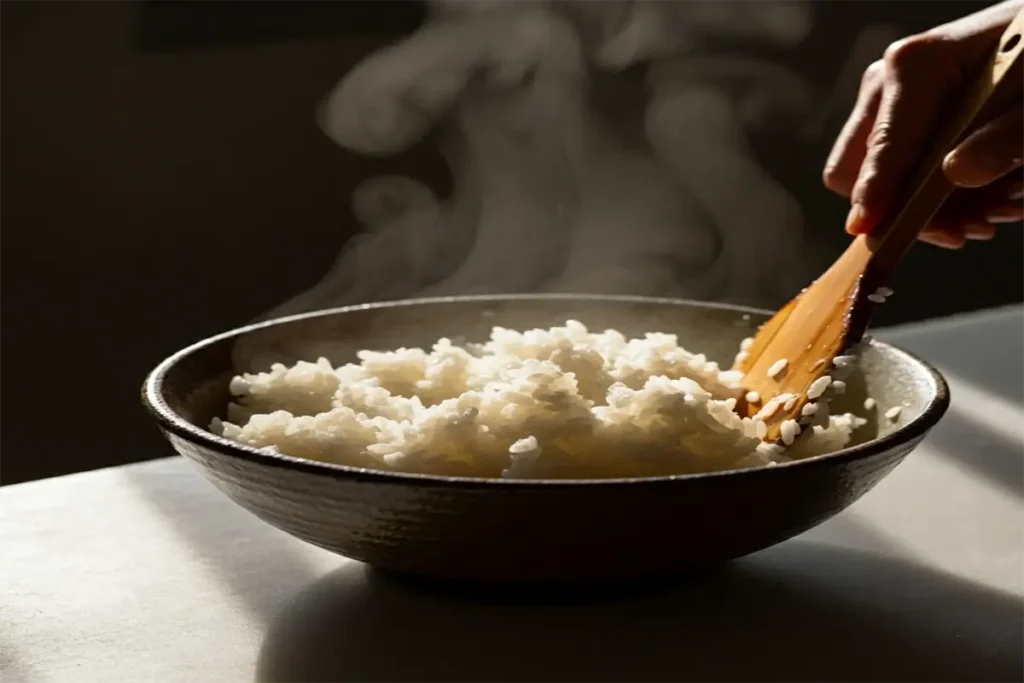
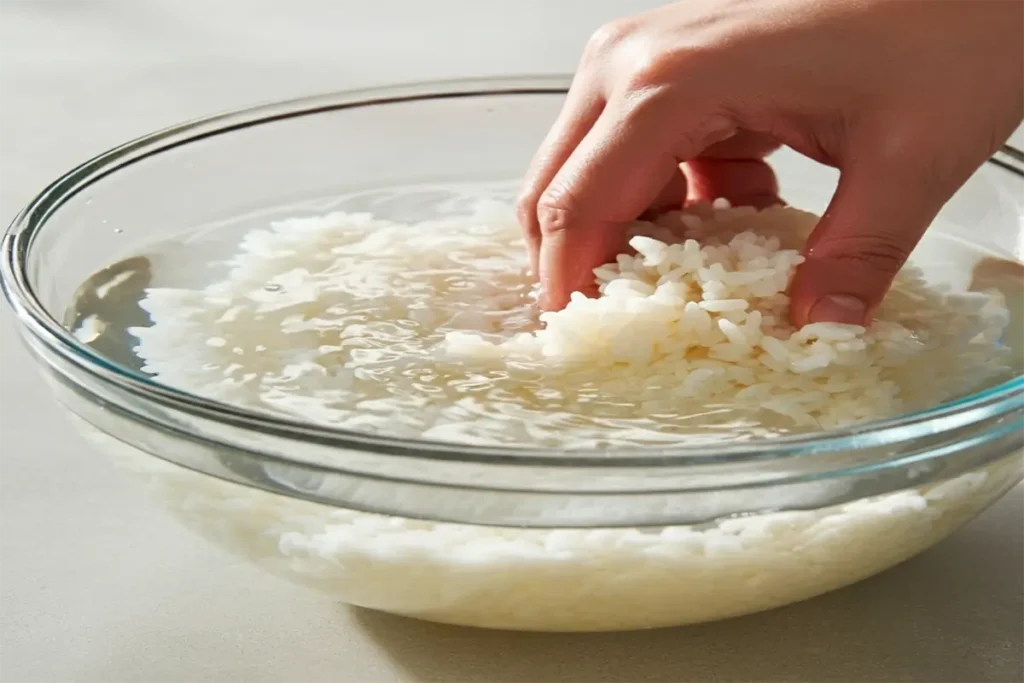
Start by washing your sushi rice until the water runs clear. This removes excess starch and ensures that the rice has the right texture. After cooking the rice, allow it to cool slightly before seasoning it with rice vinegar, sugar, and salt. The seasoning should be balanced—sweet, tangy, and savory.
Step 2: Slice the Fish
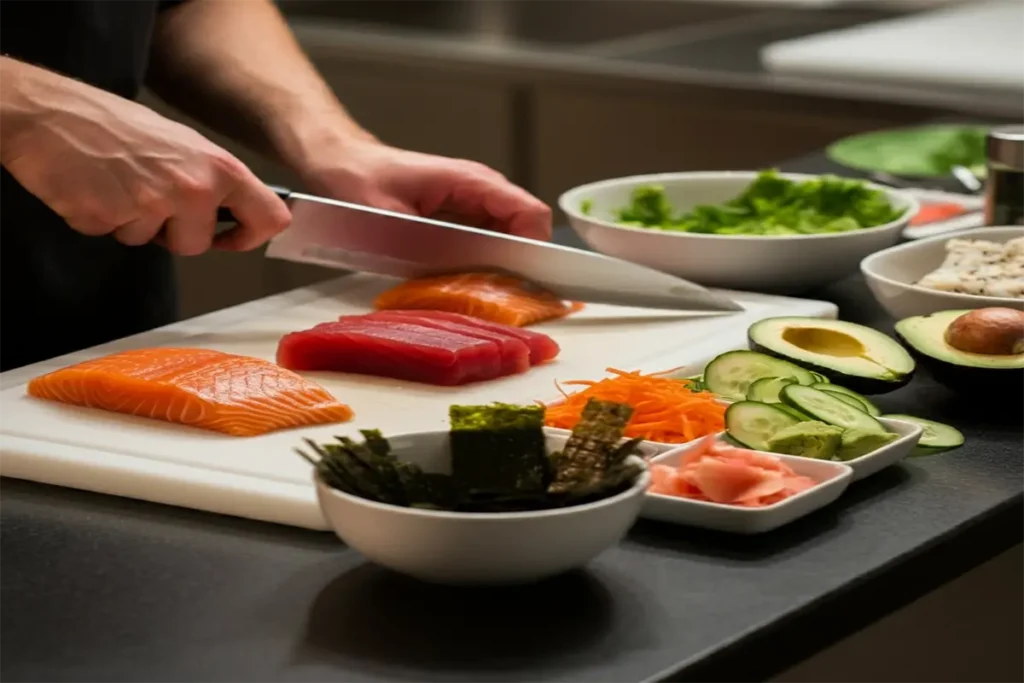
Next, prepare your fish. Slice your sashimi-grade tuna, salmon, and any other seafood into thin pieces. If you’re using shrimp or cooked eel, cut them into bite-sized pieces. Make sure the fish is fresh for the best flavor.
Step 3: Assemble the Chirashi
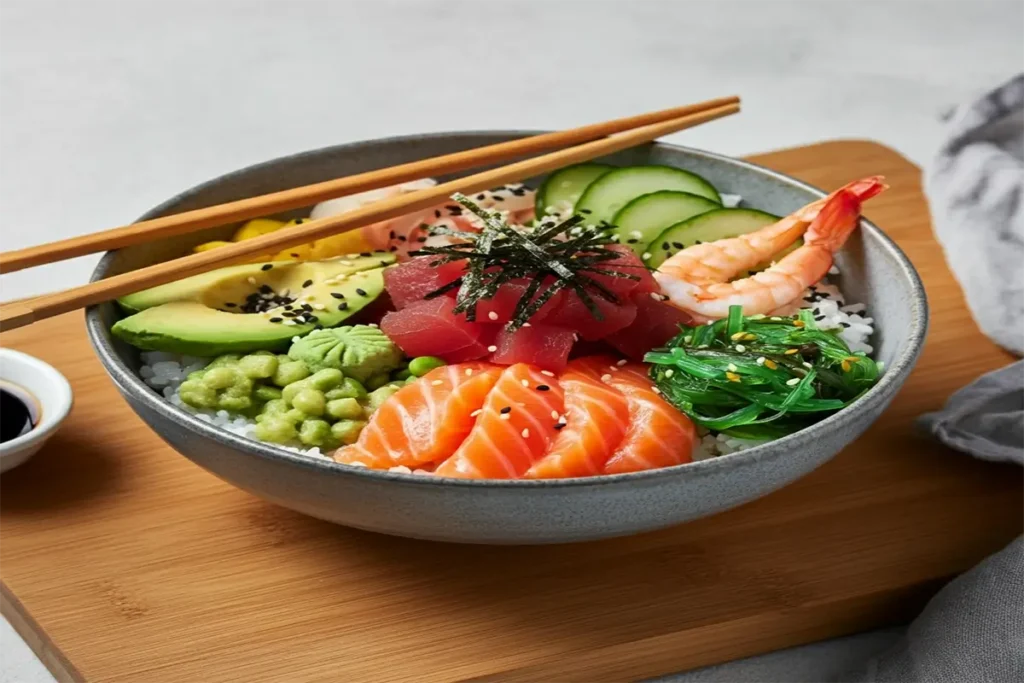
In a large bowl, spread your prepared sushi rice as the base. Gently place the sliced fish, avocado, cucumber, and any other toppings you’re using on top of the rice. Be sure to scatter the ingredients evenly for an appealing presentation.
Step 4: Add the Finishing Touches
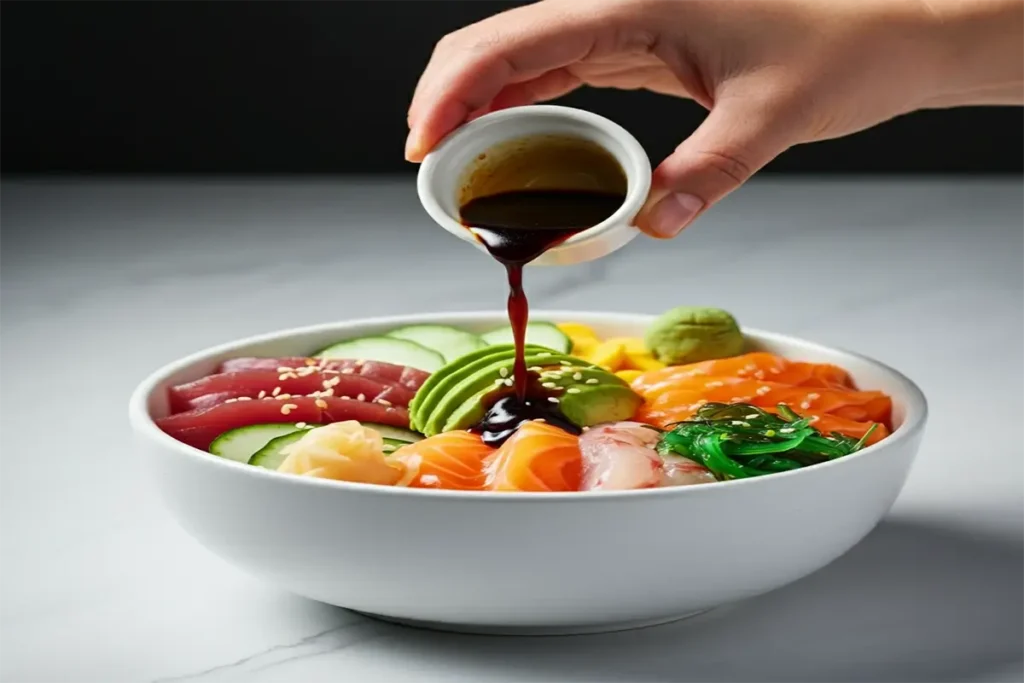
Finally, drizzle your chirashi with soy sauce or sesame oil. Garnish with sesame seeds, nori strips, and pickled vegetables for added flavor and texture. Serve immediately, and enjoy!
Creative Variations of Chirashi
One of the best things about chirashi is its versatility. You can customize it based on your dietary preferences or what’s available in your kitchen.
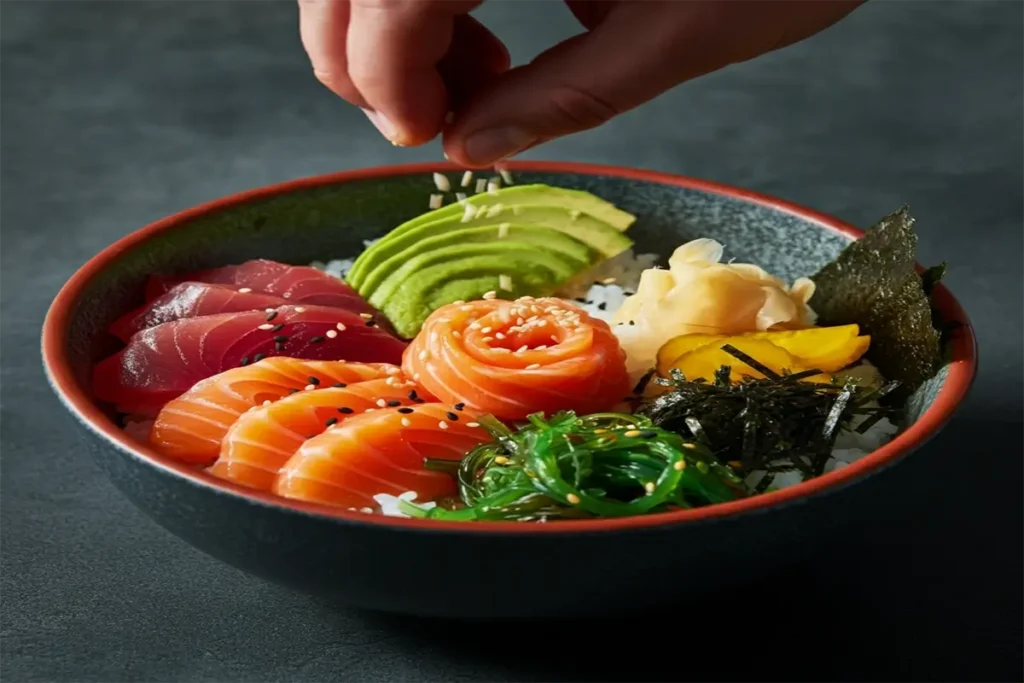
Vegetarian Chirashi
For those who prefer plant-based meals, vegetarian chirashi is an excellent choice. Instead of raw fish, use ingredients like:
- Tofu: A great protein source that can be lightly grilled or marinated.
- Pickled Vegetables: Pickled radish, carrots, and mushrooms bring flavor and color.
- Avocado: A creamy, healthy fat that complements the other veggies.
Chirashi Don
Chirashi don is a more filling variation that often includes additional toppings like tempura or pickled plums (umeboshi). This version is perfect if you want something heartier and is often enjoyed as a main meal.
Fusion Chirashi
If you’re feeling adventurous, fusion chirashi combines traditional Japanese ingredients with flavors from other cuisines. For example, you could add avocado and spicy mayo for a modern twist, or top your chirashi with wasabi aioli for an extra kick.
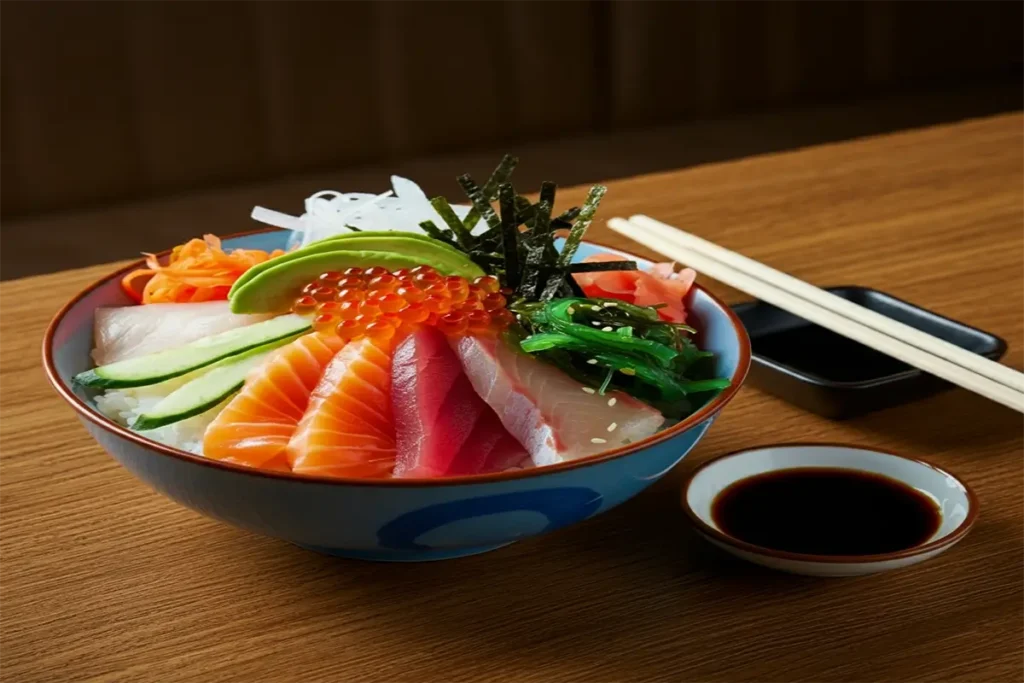
The Health Benefits of Chirashi
Chirashi isn’t just delicious; it’s also a healthy meal option. Here are some reasons why chirashi can be a great addition to your diet.
Rich in Omega-3 Fatty Acids
The fish in chirashi, particularly tuna and salmon, are excellent sources of omega-3 fatty acids, which are crucial for heart health, brain function, and reducing inflammation.
Packed with Nutrients
Chirashi is also a nutrient-dense meal. The sushi rice provides complex carbohydrates, while the fresh vegetables offer fiber, vitamins, and minerals. The fish provides high-quality protein, making chirashi a balanced, all-in-one meal.
Low in Calories
Since chirashi is mostly made up of fresh, whole ingredients, it tends to be lower in calories compared to other dishes like fried rice or ramen. It’s a satisfying, nutrient-rich meal that won’t leave you feeling sluggish.
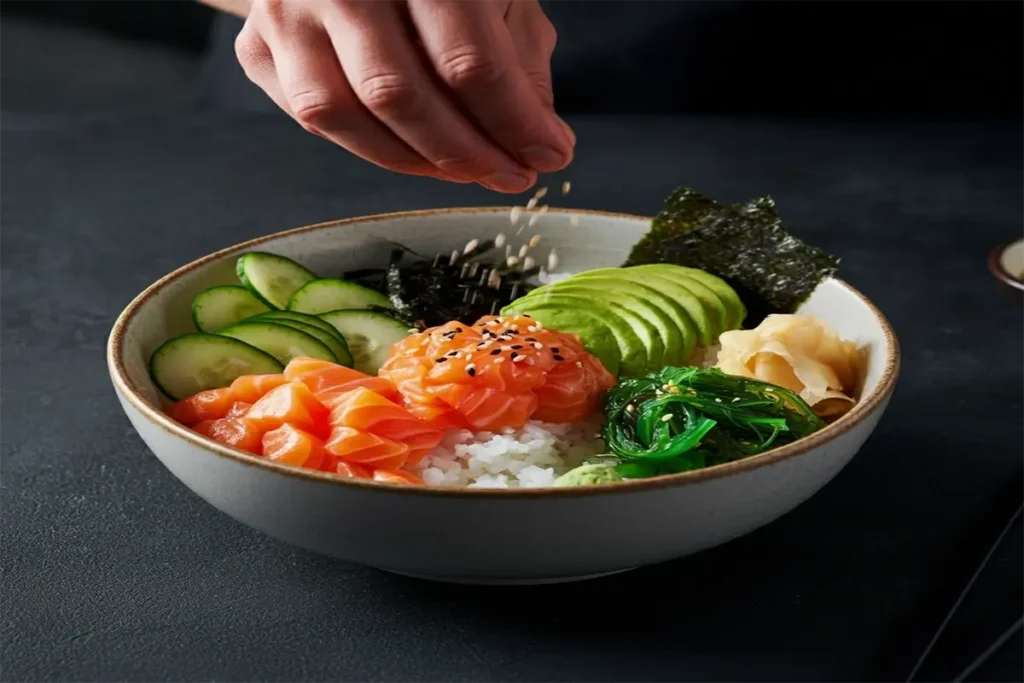
The Art of Chirashi Presentation: Why Looks Matter
One of the standout features of chirashi is its beautiful presentation. The Japanese take great pride in making food visually appealing, and chirashi is no exception. While the ingredients may vary, the way you arrange them can elevate the dish from simple to extraordinary. The vibrant colors of the fish, vegetables, and garnishes create a visually striking contrast against the soft, slightly glossy sushi rice.
When making chirashi at home, it’s important to consider the aesthetics. For example, place the sliced fish neatly in a circular pattern or in a way that each piece is visible and easily accessible. Garnish with contrasting colors like bright red pickled ginger, deep green avocado, or the golden hue of sesame seeds. A few sprigs of fresh herbs or a few additional slices of vegetables around the edges can help make the dish even more visually appealing. Not only does this add to the overall dining experience, but it also ensures that you’re savoring each ingredient one by one, appreciating the balance of flavors in a way that engages all the senses.
Chirashi as a Customizable Meal: Tailor It to Your Taste
One of the most wonderful things about chirashi is that it can be fully customized to suit your tastes or dietary restrictions. If you’re a seafood lover, you can pile on your favorite fish, such as scallops or mackerel, for a richer and more indulgent dish. If you’re watching your calorie intake, you might prefer using lighter ingredients like thinly sliced vegetables or even leaner cuts of fish.
For those with dietary preferences, chirashi offers numerous options:
- Gluten-Free: Traditional chirashi is naturally gluten-free. Just be sure to check that any sauces or seasonings you use (like soy sauce) are gluten-free.
- Low-Carb: If you’re on a low-carb or keto diet, replace the rice with cauliflower rice or simply skip it altogether for a protein-packed dish full of fish and veggies.
- Vegetarian or Vegan: As mentioned earlier, substituting fish with plant-based options like marinated tofu, tempura vegetables, or even fruit like mango or kiwi can make chirashi vegan or vegetarian-friendly.
Chirashi offers the flexibility to create a dish that fits perfectly with your dietary needs while still remaining delicious. This adaptability makes it a fantastic choice for anyone looking to enjoy Japanese cuisine without compromise.
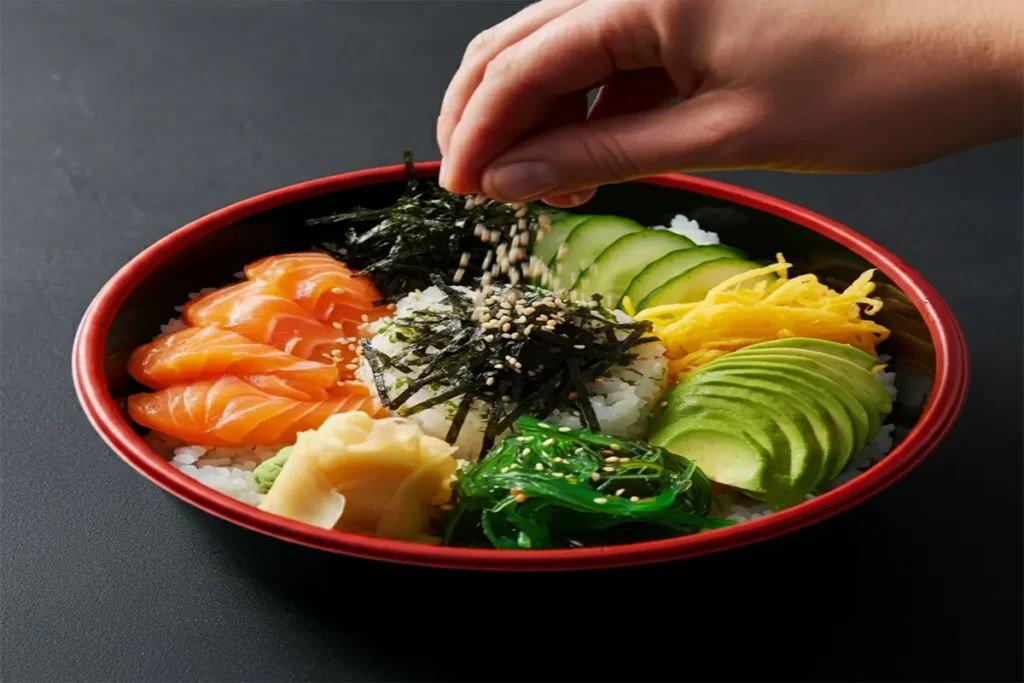
The Global Appeal of Chirashi: A Dish for Everyone
Although chirashi originated in Japan, its global popularity has skyrocketed in recent years. Sushi bars and Japanese restaurants around the world have embraced chirashi, putting their own spin on the dish to cater to local tastes. In some places, for example, you may find chirashi bowls topped with local ingredients like spicy tuna or even a fried egg for an added layer of richness.
In the United States, chirashi has become a trendy option in the sushi world. With the growing interest in healthier, fresher foods, chirashi is a perfect fit. The dish is low in calories but still satisfying, making it an appealing option for people seeking to eat healthily while still indulging in delicious flavors.
International food fusion has also played a role in making chirashi even more accessible. Many restaurants now offer creative variations, such as chirashi with a spicy mayo drizzle, or even unique combinations like tropical fruits paired with raw fish. These adaptations allow people from all cultures to enjoy chirashi, whether they’re looking for an authentic Japanese experience or a fun twist on the traditional dish.

Chirashi as a Celebration Dish: The Perfect Party Food
In Japan, chirashi is often served on special occasions like New Year’s celebrations, weddings, or birthdays. It’s seen as a dish of abundance and celebration, and its colorful, diverse ingredients symbolize prosperity and good health.
If you’re hosting a dinner party or celebrating a special event, chirashi can be an excellent dish to serve. It’s easy to prepare in large quantities, and because you can customize the toppings, it allows guests to create their own personalized bowls. You could set up a chirashi bar with a variety of fish, vegetables, and sauces, letting everyone choose their favorite toppings to create their perfect bowl. This hands-on approach makes chirashi both fun and interactive, while also offering something for every dietary preference.
Additionally, serving chirashi at a party or gathering can also add an element of elegance. Since the dish is visually appealing, it serves as a conversation starter, with guests admiring the intricate arrangement and colorful presentation. It’s an ideal dish for those looking to impress their guests with something different, while still keeping the meal light and healthy.
Chirashi: A Sustainable Choice for Seafood Lovers
As sustainability becomes a growing concern, many seafood lovers are turning to dishes like chirashi to make more responsible choices. By selecting sustainably sourced fish, you can enjoy the flavors of chirashi while being mindful of the environmental impact of overfishing.
Look for fish that are certified by organizations like the Marine Stewardship Council (MSC), which ensures that the seafood is harvested in a way that doesn’t harm marine ecosystems. Additionally, consider using seasonal fish to reduce the carbon footprint associated with transportation. Opting for farmed fish from reputable sources can also help reduce the strain on wild fish populations.
By incorporating these sustainable practices into your chirashi preparation, you’re not only enjoying a healthy and delicious meal but also supporting the preservation of the oceans and marine life for future generations.
Conclusion: Why You Should Try Chirashi Today
If you’ve been on the fence about trying chirashi, now is the time to dive in. This colorful, flavorful dish is not only a treat for your taste buds but also offers a level of flexibility that allows you to make it your own. Whether you’re making it at home, serving it for a special occasion, or enjoying it at a restaurant, chirashi is sure to impress.
So, why not get creative with your next meal? Experiment with different toppings, sauces, and seasonings to craft a chirashi bowl that’s uniquely yours. With its rich flavors, stunning presentation, and health benefits, chirashi is a dish worth trying. If you’ve made it before, or are planning to, let us know how it turned out in the comments! We’d love to hear about your chirashi creations and any fun variations you’ve tried.
FAQ About Chirashi
What kind of fish is best for chirashi?
For the best chirashi experience, use fresh sashimi-grade fish like tuna, salmon, and yellowtail. These fish have the right texture and flavor for raw consumption.
Can chirashi be made vegan?
Absolutely! A vegan chirashi can include toppings like tofu, avocado, cucumbers, and pickled vegetables. You can still enjoy the delicious sushi rice and seasoning without the fish.
How do I store leftover chirashi?
Chirashi is best enjoyed fresh, but you can store the rice and fish separately in the fridge for up to a day. Make sure to consume it within 24 hours for the best taste.
Is chirashi healthy?
Yes! Chirashi is packed with healthy fats, protein, and vitamins, making it a nutritious option for lunch or dinner. Just be mindful of your portion size, especially if you’re adding sauces or extra toppings.
Conclusion: Enjoy the Art of Chirashi
Chirashi is more than just a meal—it’s an art form that celebrates fresh, high-quality ingredients in a beautifully presented bowl. Whether you’re a sushi aficionado or a newcomer to Japanese cuisine, chirashi offers a delicious way to enjoy a balanced, flavorful dish. So, why not give it a try? Head to your local market, gather your ingredients, and start crafting your own chirashi masterpiece today!
By following these tips and making chirashi your own, you’ll not only enjoy a delightful meal but also experience the joy of creating something truly special. If you’ve tried chirashi before or are planning to, share your experience in the comments below—we’d love to hear your thoughts!

